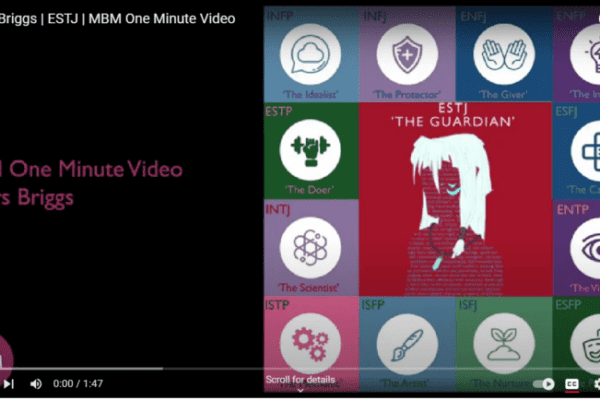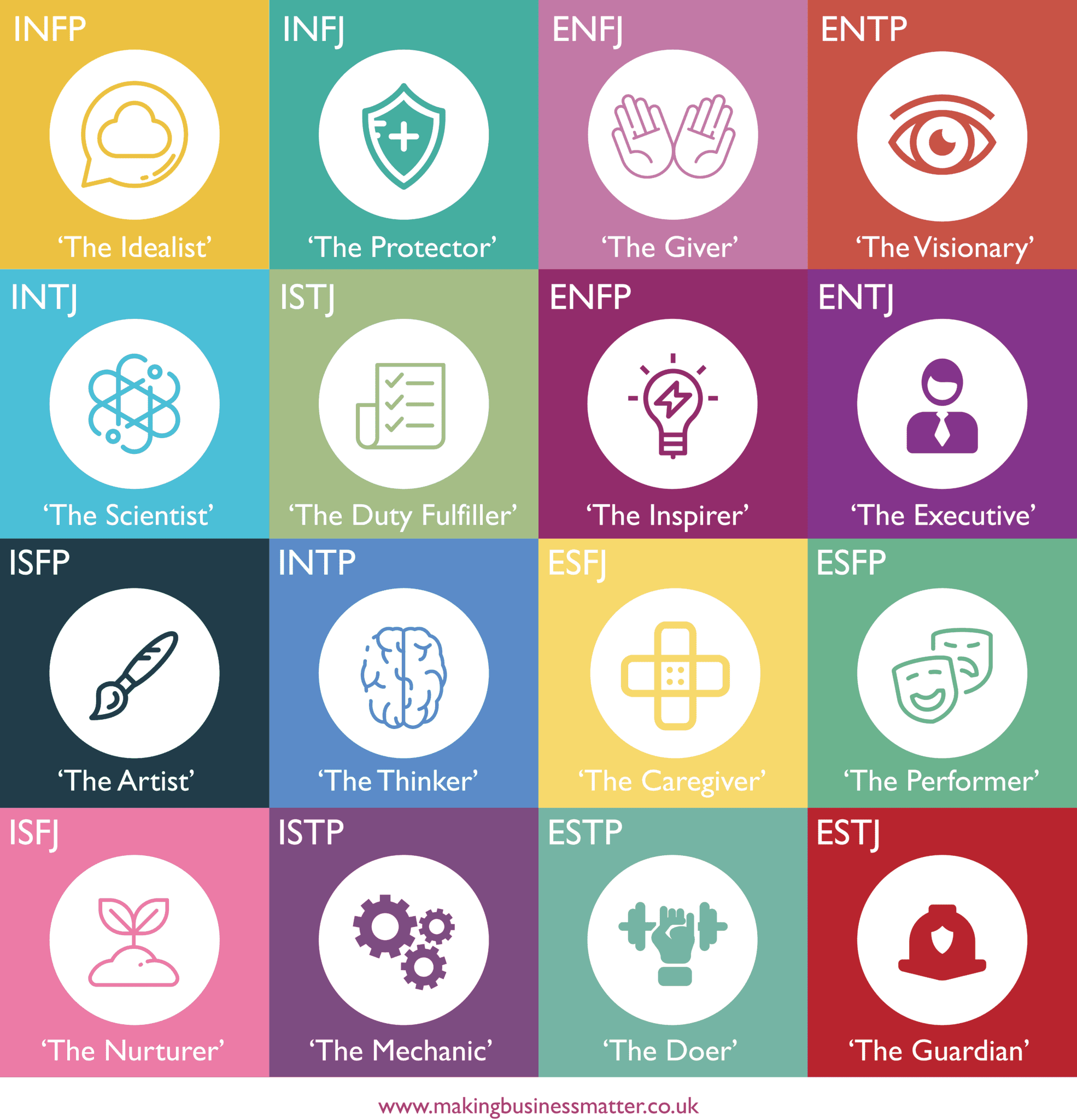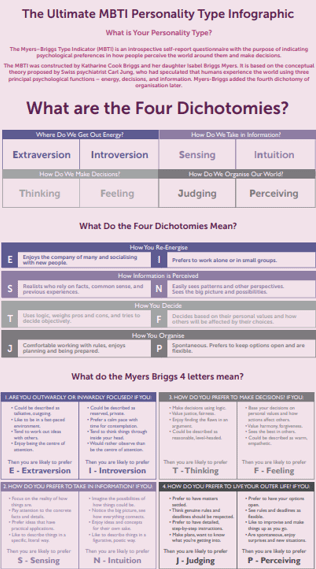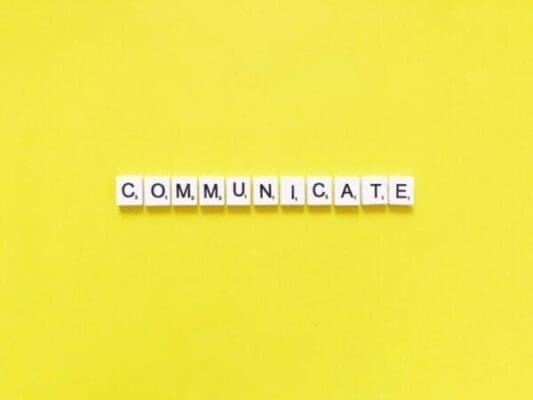‘The Guardian’
Without ambition one starts nothing. Without work, one finishes nothing. The prize will not be sent to you. You have to win it.”
– Ralph Waldo Emerson
Extroverted. Sensing. Thinker. Judger. What a combo! A practical organiser who thinks on their feet and plans to the T.
In this complete guide, you’ll discover one of the most straightforward personality types. That is, you’ll learn what irks ESTJs and what makes them your rock. You’ll also get to know them and manage your way around them.
ESTJs are very much needed at this moment in time when we tend to walk on eggshells to give our point across. This is because they won’t shy away to tell you what they think. Without practical ESTJ who would build our world? If you’re an ESTJ, then let’s help you reconnect with your essence.
As 9% of the population, ESTJs are the third most common personality type. Ever heard of productivity? Well, I’m confident ESTJs invented it (they didn’t actually, it’s Adam Smith who did in 1776 – he’s an INTP). However, ESTJs embody it so well, it’s as if they did. They have no time to waste as determined and practical types, so let’s get moving.
How can you embody the best of ESTJ and become a better version of yourself? Well, that’s where this complete guide comes into play.

MBTI | An Overview
Carl Gustav Jung? Isabel Briggs-Myers? Who’s the founder of MBTI?
While many claim that Katherine Briggs and her daughter Isabelle Myers are the creators of the now-famous MBTI, did you know it was Carl Gustav Jung who came up with the idea first?
MBTI is based on Carl Jung’s work, “the influential theory of psychological types” dating back to 1921. His work talks about preferred types of behaviour with four main functions. The first two functions define the way we perform – how we take information and how we make decisions. The second two functions define our energy or form of expression – extraversion and introversion.
Controversially and contrary to popular belief, Jung repeatedly objected to Katherine and Isabelle’s work, claiming that his work has been misinterpreted.

Development of MBTI
Strong with the belief that Jung’s theory on the knowledge of preferences will help women find work, Isabelle Myers with the help and guidance of her mother Katherine Briggs embarked on a journey that led to the birth of MBTI, also known as Myers Briggs Type Indicator.
One of the key advancements the mother and daughter added to the MBTI dimension is the attitude to the outer world and so the birth of a 4th preference came to light.

The Rise and Fame of MBTI
In 1970 Isabelle Myers and Mary McCaulley worked together to bring light to MBTI and soon after in 1975 their efforts paid off as it became one of the most used and well-known personality type assessments in the world (even until now).
Sticky Learning ® is 7 times more effective than 1-day training courses. Plus, you will get a Chain of Evidence proving your Return on Investment. Discover soft skills training that changes behaviours long term.

The 5 Values of MBTI
- MBTI can be used for individuals or teams.
- MBTI is a framework to improve self-awareness.
- MBTI is a powerful tool to improve communication.
- MBTI is a tool to develop leadership skills such as problem-solving, decision-making, change management, and teamwork.
- MBTI is a method for identifying stressors and how to manage them.
The 4 Dimensions of MBTI
Let’s start our self-awareness journey with the 4 dimensions of MBTI. Here’s a quick checklist to gauge yourself and see where you stand. Reflect on those 4 questions without overthinking (we will cover more in-depth a little later, this is just to get you started).
First Dimension – how do you express your energy: are you an Extrovert (E) or an Introvert (I)?
Second Dimension – how do you process information: are you a Sensor (S) or an Intuitive (N)?
Third Dimension – how do you make decisions: are you a Thinker (T) or a Feeler (F)
Fourth Dimension – how do you like your lifestyle: are you a Judger (J) or a Perceiver (P)
Click on the below for the larger image.

Now that you have reflected, you will notice that the different combination of those 4 dimensions results in 16 profiles which we know as MBTI. Those 16 profiles are divided into 4 different quadrants or families which we call: Rationales (INTJ, INTP, ENTJ, ENTP), Idealists (INFJ, INFP, ENFJ, ENFP), Guardians (ISTJ, ISFJ, ESTJ, ESFJ), and Artisans (ISFP, ISTP, ESFP, ESTP).
While we are born with a certain set of tendencies, we also develop subsequent tendencies as we grow up due to our environment and the experiences we go through.
Example
Take for example someone born with a more dominant extroverted tendency; they can unconsciously develop their introverted tendency due to circumstances in life beyond their control (like an event that triggers shyness in them).
Other times, we can consciously choose to develop a tendency for work purposes. Someone who is a perceiver might want to develop some of the judger’s tendencies to be more productive at work.
One thing for sure is that there is no black or white: extrovert or introvert, sensor or intuitive, thinker or feeler, judger, or perceiver. We all dance in a spectrum between each tendency. Some of us might have more extreme tendencies, that’s for sure.
When we learn a new tendency, we don’t change our nature, we just upgrade ourselves thanks to our environment and upbringing.
A word of caution, if you are living in a constant state of stress, anxiety, and worry, then you probably are acting from nurtured tendencies rather than your natural tendencies. In that case, reverting to your natural tendencies can lower your stress. Once you master both dynamics, you can of course dance between them.
Okay enough with MBTI, you want to know more about yourself, right? Just in case your curiosity is taking the best of you, you can check our ultimate MBTI guide for Myers Briggs. And if you want to confirm you are INFP, you can go through this short MBTI test.
Meaning
Do you want to get things done? Ask an ESTJ, they will gladly do it and in no time. ESTJs are the doers of our world. ESTJs are as practical as you can get. They are practical, organised, and driven leaders.
Do you want to be in on a secret? A secret most ESTJs wouldn’t want you to know? Three secrets actually that you could use to your advantage: they need a consistent and comforting morning routine (they have their goals on their bathroom mirrors), they like to control E – V – E – R – Y _T _ H_ I _ N _ G (from the place of the book to the time you go to bed), and their focus on achievement and getting things done is legendary (they simply never give up and seem to have hidden energy up their sleeves) – ESTJ challenge people, don’t take no for answer (even if they have to break down your goal with you).

If your sun sign or rising sign is in Aries, you probably embody the ESTJ characteristic to the T. Perhaps you enjoy freelancing as a project manager, community manager, team-building consultant, or even as a financial planner for your side hustle. It is more and more probable that you are an ESTJ.
Do you enjoy leading others and organising everything? Do you want to understand the logic of a problem and have the facts first before anything else? Is it possible that you ‘forget’ to take other people’s feelings or opinions into consideration when solving a problem? Have you often been called or referred to as the general? Congratulations, you’re ESTJ certified!
Are ESTJs Rare?
It seems being an ESTJ is powerful and commanding after everything we read, so now the obvious question on everyone’s lips: Are ESTJ rare?
We mentioned at the beginning of this article that ESTJ makes up 9% of the population. Is it enough to rank as one of the least rare personalities? While different sources have different statistics, none ranked ESTJ as one of the least rare personality types. You are a popular bread! Having an ST core, you approach life and work objectively and analytically and like to focus on realities and practical applications in your work but remember to take people’s values and opinions into consideration.
What is an ESTJ Woman like?
Women ESTJs are independent, assertive, and honest. They can be very much goal oriented and with determinism won’t stop until achieved. They do value close relationships as long as they don’t interfere with their goals. It is said they can have dominant masculine energy.

What is an ESTJ Person Like?
As a sentinel and guardian, ESTJ embodies the most practical and down-to-earth characteristics we can find in a person. Fact-minded, practical, organiser, assertive, analytical, systematic! Poof what a list! Leave some for the rest of us. As an ESTJ, you love to take care of the details and leave the concepts and theories for others (phew, we still have something). You are the one who rolls up your sleeves and do the nitty gritty, the work no one else wants to do (thank you on behalf of the rest of us, lazy people). Among your most important qualities are your determination, organisation, and always delivering on time. On the downside, you, ESTJ can be too direct, sometimes harsh, too rigid, and predictable.
Personality Type
Remember the 4 dimensions we briefly discussed earlier when describing MBTI? Well, here we are. I hope you were able to reflect, if not this is your chance.
Let’s start with the first dimension. And the winner is (E) for “Extroversion”! Party and party anyone?
As an extrovert ESTJs gain energy (and feel re-vitalised) by being in the company of others and in external events. Your preferred way of communication is by talking which allows you to work out ideas by talking them through. You learn best through doing or discussing. Contrary to the introvert (your opposite), you have broad interests. ESTJ is also sociable and expressive – they often share personal information and pry on others. ESTJ often takes initiative in work and relationships.
Are you really an extrovert? or maybe, just maybe, an ambivert? One of the top organisational psychologists Adam Grant conducted studies that showed that 2/3 of the population are ambiverts. To make sure you know who you really are, here’s a 9-item checklist you can check.
2nd Dimension

Next, let’s welcome the second dimension. Here we answer the question: How do you process information?
ESTJs are very much in tune with their senses. They excel at focusing on the details and specifics, always noticing details, remembering facts, and focusing on the small steps and facts. In their process of pattern creation, they notice anything new or different right away, they are that good. ESTJs live in the here and now and are not interested in the future preferring a look at the present and what can be practically done. They trust experience over theories and ideas and enjoy step-step instructions. ESTJs use their 5 senses to take in information.
Let’s move to the third dimension.
Are You Objective or Subjective When Taking Decisions?
It’s decision time for ESTJ, the time to remove the rose-coloured glasses, put humans and values aside, and be objective. It’s not that ESTJs are not compassionate, it’s just that it’s easier to leave emotions aside and look at the decision with a black-and-white vision. After all, Henry Ford said it best: “If I had asked my customers what they wanted, they would have said a faster horse.” That’s how ESTJs think big and objectively. They consider the pros and cons of ideas, information, and opinions. Work harmony and being good with colleagues are not a priority for ESTJs preferring to concentrate on the task at hand. In fact, they can be harsh with their fellow Feelers sometimes (without really meaning it) by giving critiques and quickly looking for errors (instead of improvements). They do have fairness in their dictionary and like to treat everyone equally. One question keeps revolving in the mind of ESTJ: “Is this logical?”
And Finally, the Fourth Dimension – Lifestyle.
It’s time. Time is running out. I don’t have time. I need to be productive. Shall we go on? ESTJs are sticklers to rules, time, rituals, productivity, and patterns. Let’s face it, they are very predictable. The first one to be at a meeting or on a date, ESTJ has a very tight schedule they follow. Planning and preparation take precedence as they don’t like surprises. Steady and consistent wins the race, are definitely a J moto. The most beautiful gift a judger can receive is a goal, a plan, and a deadline. If you’re looking for creativity, they’re not the ones you should be seeking.
In a nutshell, ESTJs’ dominant cognitive function is extraverted thinking (Ei) which makes them factual and objective oriented. Their auxiliary function is an introverted sensation (Si) which makes them aware of past experiences and facts, great at remembering system and project patterns, and they use patterns to confirm facts based on their past experiences. Extraverted intuition (Ne) is ESTJs’ tertiary cognitive function which means they rely upon their introverted sensation much more and try to use the extraverted intuition the least possible. Introverted feeling (Fi) is the last (and in this case the least used) cognitive function of ESTJs meaning they base their decision on facts only.
Smart

History has been very judgmental; you’re only smart if you’re number smart or strategic (or something like that). Engineers and doctors are smart, the rest of the world needs to catch up. Let me tell you something, one of my favourite quotes was said by a certain Albert Einstein (yes ‘that’ Einstein):
“Everybody is a genius. But if you judge a fish by its ability to climb a tree, it will live its whole life believing that it is stupid.”
Interesting right? Howard Garner, a Harvard psychologist, wrote a book in 1923 about 9 different types of intelligence. NINE! What does this mean for you? What type of intelligence does ESTJ possess? Linguistic Intelligence. Communication facts are a piece of cake for you. And that my dear comes in super handy when you’re dealing with projects. Organising projects and keeping things simple is your genius.
What is the smartest personality type? INTJs are most known as nerds.
But that’s not all! Are ESTJ intelligent? You are in fact the 4th most intelligent personality type. YES, you are among those geniuses. You have great organisational skills and are good when dealing with crises.
Weaknesses
What is ESTJ’s weakness? Rigid, judgmental, unable to relax, and possibly too blunt are all on the list. Since we’re dealing with the world of facts here, it’s black and white, my way or the highway. ESTJ needs to be more understanding and patient with different personalities who are not as fast as they want them to be and know when it’s time to take a break to relax.
ESTJ-t (the 5th Dimension)
T for Turbulent. Turbulent ESTJs (ESTJ-t) are more aggressive than Assertive ESTJ (ESTJ-a). They react more emotionally and will most likely get on the defensive. On the other hand, they are more in tune with others than ESTJ-a. They need their friends and partners more. ESTJ-ts are also more likely to express their emotions. At work, ESTJ-t is more cautious of the two and tends to work more. ESTJ-a is bolder.
Compatibility

So, who should you marry? Guardians are most compatible with Artisans. As a Guardian – ESTJ has the best flings and passionate short-term relationships with ISFPs, while they have the best long-term lovey-dovey relationship with ESFP.
As a rule of thumb, it’s important to have a balance of two traits in common and two complementary. The two in common will help you feel at home with the person, and the two complementary will give you the friction to keep the sparks alive. Choosing the right combination to find your ‘almost’ ideal match will depend on your upbringing, your current environment (and if you want to change it), and the goals you want to achieve in life.
Taking the example above, the ISFP will bring introversion, more depth, and creativity into the relationship. While this combination is intriguing in the short term, it can exhaust you in the long haul.
So, what are you choosing? Or rather who should the ESTJ marry??
In relationships, ESTJs are traditional, steady, and reliable. They look for stability and honesty in their partner. They always have a supportive presence for their partner and keep encouraging their dreams, they will always be a rock.
In the negative, ESTJ can be controlling and are not too subtle when it comes to emotions (sometimes even insensitive).
ESTJs primary love language is quality time.
How Does An ESTJ Flirt?
In the dating phase, ESTJ flirts by pursuing you relentlessly until they get you. They will approach you bluntly and shower you with the most traditional romantic gestures – from flowers to chocolate, passing long walks by the beach.
In the relationship phase, ESTJ still shows some traditional gestures and can be your fierce defender when someone ‘dares’ to oppose you. They do everything for the good of their partner (even if sometimes they can be insensitive). At the very least, they show their love by taking care of all the practical things of the family.
Now because of their reputation of being insensitive and preferring facts, this tends to make the rest of us wonder: Does ESTJ fall in love?
YES! And when they do, ESTJ fall in love slowly but hard. They take close relationships seriously, and they invest themselves with all they have, that’s why they fall hard.
ESTJ and INFP
ESTJ are attracted to the depth and empathy of INFP while INFPs are attracted to the reliability and charisma of ESTJ.
The ESTJs and INFPs are complete opposites in every sense of the word. They live in completely different worlds.
On the positive, ESTJ inspires INFP to go out of their comfort zone and come up with concrete plans, while INFP inspires ESTJ to introspect and be more relaxed with their day-to-day.
ESTJ and INFJ
ESTJ are attracted to the depth and empathy of INFJ while INFJs are attracted to the reliability and charisma of ESTJ.
ESTJs and INFJs have similar lifestyles (J), which makes them at least agree on something.
On the positive, ESTJ inspires INFJ to go out of their comfort zone and come up with concrete plans and look at facts, while INFJ inspires ESTJ to introspect and connect more deeply with the world of emotions.
ESTJ vs INTJ
ESTJs are attracted to the logical intelligence of INTJ while INTJs are attracted to the practicality and charisma of ESTJ.
ESTJs and INTJs have similar values and they share a strong core (TJ), which makes them form a strong bond.
The differences between their extroverted/introverted and sensing/intuition help each in the growth and the growth of their relationship.
On the positive, ESTJ inspires INTJ to go out of their comfort zone, while INTJ inspires ESTJ to introspect more.
And now, let the wedding bells start ringing!
Learning & Growing
But first, a little glimpse into how you became you.

Development
Like any other personality type, ESTJ goes through three phases of transformation in their lifetime. Phases can be shorter or longer depending on your nature, the environment you are growing up and developing into, and your career.
The first phase is obviously childhood. As highly charismatic children, ESTJ’s main development at this stage is their extroverted thinking function. ESTJ may seem opinionated and judgmental. They take themselves and life very seriously and strive for excellence in whatever they do. The outside world is like a playground they enjoy messing around in, meeting new and different people, debating, and sharing facts, and developing their extroverted activities which mainly consist of gathering facts and systems.
The second phase happens between adolescence and early 30s. This is where ESTJ develops the second faculty – sensing and is at odds between the emotional teenage years and the maturity – thinking & feeling. ESTJ will start to rethink their previous thoughts and judgments. The internal struggle can last a while. In this phase, ESTJ starts to develop their extraverted intuition.
The third and final phase of development for ESTJ is the integration phase. This is where all the pieces of the puzzle click together.
How E & I can help complement each other
Extroverts can help introverts open their sphere of influence by:
- Moving into action
- Broadening their ideas
- Amplifying their energy focus
- Expanding their Interaction
- Widening their network
- Providing extensive information
Introverts can help extroverts centre themselves by:
- Reflecting more
- Scanning through ideas
- Deepen their calmness
- Strengthen their concentration
- Deepen their friendships
- Listening to others
How S & N can help complement each other
Sensors can help intuitivist be more practical by:
- Adding more facts
- Providing more practical and realistic information
- Looking deeper at the details
- Applying their experience when solving problems
- Focusing on what needs attention now
- Focusing on the present
Intuitive can help Sensors recognise the inter-connectedness by:
- Looking at new ideas
- Creating change
- Being open to looking at trends
- Applying insight and pattern recognition to solving problems
- Focusing on long-term goals instead of short-term goals
- Focusing on future possibilities
How T & F Can Help Complement Each Other

Thinkers can help Feelers get clearer and more direct by:
- Analysing the implications and consequences
- Being consistent with rules
- Standing firm on important principles
- Being more objective when taking decisions
- Having specific criteria that allow a clearer thinking process
Feelers can help Thinkers reconnect by:
- Predicting how others will react and feel
- Making individual exceptions when necessary
- Accepting human-centered values
- Allowing better cooperation and collaboration
- Creating a more harmonious environment
How J & P can help complement each other
Judgers can help Perceivers be more productive by:
- Being more organised and decisive
- Sharing decisions and moving ahead
- Being in control
- Having closure
- Focusing on tasks and goals
- Providing clear expectations and timelines
Feelers can help Judgers be open to possibilities by:
- Being more flexible and adapting better
- Dealing with situations as they arise
- Embracing new experiences
- Being open to options
- Being open to new information
- Accepting change
Great points, right? Now, as an ESTJ, your opposite would be INFP. I’d like to invite you to choose one point of each of your opposite (that makes 4 points) and develop them, making them part of you.
How to Communicate with your ESTJ Manager, Colleague, or Romantic Partner

Do you want to get the most out of your relationship with your ESTJ colleague/employee/boss or even your romantic partner? It’s simple, just act as they would, and they will love you for it. So much that you will see their productivity skyrocket, their affection for you increases, and more.
The 5 ESTJ Rules for the Introvert (rule 0: let’s connect)
- Show you are listening by acknowledging and hinting you are preparing an answer
- Try using your body language to express your interest and enthusiasm such as leaning forward, nodding, smiling, and most importantly eye contact
- Be ready to share more information (others would want feedback)
- Take initiative sometimes and introduce yourself or start a conversation
- Expect not well-thought words as extroverts think out loud
The 6 ESTJ Rules for the Intuit (rule 0: dream a little, you are allowed)
- Provide step-by-step, detailed information on specific tasks (share the facts before giving the big picture)
- Provide as many concrete facts and examples to prove your ideas (and I mean to be super generous)
- Share more facts and observations (tables, graphs, infographics, they are all welcome)
- Be organised in your presentation, and sequentially present your thoughts and findings (don’t just share links and ideas)
- Remember that others might not seek change – be open to sticking to a plan
- Assess what is working well as well as what needs to be changed
The 5 ESTJ Rules for the Feeler (rule 0: people buy emotions, not facts)
- Cut to the chase and use logical analysis to reach the conclusion
- When ESTJ is focused on work, don’t approach gossip
- Remember to look at the pros and cons of ideas and information
- Give honest feedback – just the way it is
- Focus on what is logical, try to make the meeting as short as possible giving only facts
The 4 ESTJ Rules for the Perceiver (rule 0: be on time and follow the rules)
- Do whatever it takes to stick to the agreed schedules and deadlines
- Prepare the Judger about possible changes, they dislike surprises – that way they can include the possible change in their calendar
- Take a decision based on the information you already have, it’s better to apologise rather than regret a missed opportunity – just do something, anything really.
- Use lists and action plans to inspire you to action on specific tasks
What Stresses ESTJ

In their book “From Stressed to Best: Stress reduction guide for ESTJ”, authors Ruth E. Schneider and David S. Prudhomme, we can find valuable tips to overcome stress as an ESTJ MBTI type. They recommend four steps to feel more fulfilled:
- Recognise your talents (we all like to feel validated).
- Look for connections – Use your extraversion skills and connect.
- Shift from feeling to thinking. Start talking out loud, analysing, looking at facts.
- STOP! Drop your to-do list (you’ve fought enough dragons for a lifetime!) – it’s time for you to rest and pamper yourself.
The 5 stressors linked to their extroversion
- Working alone
- Having to communicate only by email
- A lengthy period of work with no interruption
- Having to reflect before acting
- Having to focus in-depth on one thing
The 4 stressors linked to their thinking
- Adjusting to personal preferences and needs
- Focusing on the positive of a situation
- Making decisions based on values and empathy
- Answering questions that seem inappropriate
Up for a challenge? I would like to invite you to work on one of the points mentioned so that you are in control of your stressor rather than them controlling you. And remember that “Rome was not built in a day.” Take it one bite at a time. And every time do one smaller step.
Careers

As a natural leader who values facts, systems, and solutions in professional settings, here are the ideal careers for an ESTJ: leadership position of any kind, government work, civic duties, financial officers, auditors, accountants, category management, lawyers, judges, banking, production, construction, applied science, police and military officers, and politicians.
They are often found in careers that require a technical approach to things, ideas, or people, and tend to be less interested in careers that require nurturing of others or attending to their growth and development.
Leadership
Did you know that sensing (S) and judging (J) personalities perform better than the rest? Also, because of their extraverted thinking and introverted sensing, ESTJs are high performers. And that the medical sector is also prominent for ESTJs who rank high among medical students. Or that when it comes to leadership, ESTJ has been found to have good project leadership, they are proficient project managers.
As an extrovert ESTJ prefers to interact a lot with people at work – that’s how they can maximise their energy. Being sensors, they prefer working with facts, concrete examples, systems and proven ideas – that’s how they think best. ESTJs’ decision-based style is focused on facts that guide them to solve problems fast. As judgers, ESTJs’ lifestyle preference is to work in an organised, structured, and orderly workplace.
In a recent journal publication, an analysis of construction workers’ safety behaviour showed that most construction workers have an ESTJ MBTI preference, and they have the most accident losses while longer safe periods. While in another publication, in the UK, ESTJ types are very prominent for security managers.
A 2010 study in Norway showed that the most frequent type of manager is ESTJ. In China, a 2013 study showed that the most frequent sales staff are ESTJ. And yet another study in Canada showed that the most frequent mining industry personnel are ESTJ!
In her 2019 book Inclusive Leadership, author Gloria Moss shares that “the most dominant MBTI type employed in UK organisations is the ESTJ type.”

Lifestyle
ESTJs enjoy outdoor activities, building and repairing things, organising events, gardening, and sports.
Quotes
“Good order is the foundation of all things.” Edmund Burke
“Surround yourself with people who force you to level up.” Unknown Author
“In my mind, nothing is more abhorrent than a life of ease. … there is no place in civilisation for the idler…” Henry Ford
“Without ambition one starts nothing. Without work, one finishes nothing. The prize will not be sent to you. You have to win it.” Ralph Waldo Emerson
And Some Quotes from our Favourite Characters:
I ask only for the strength to defend my people. Boromir, The Lord of the Rings
I know you all hate me, and I’m sorry, but I don’t care. Monica Geller, Friends
You couldn’t kill me if you tried for a hundred years. Lagertha, Vikings
See, I’ve always got an A, B, and C strike plan to get us out of any potentially life-threatening situation. Mac, It’s Always Sunny in Philadelphia
Famous People
Let’s look at some of the visionaries; our teachers who guide us to become the best version of ourselves and reach our full potential.
With so many inspirational teachers to guide us, we are blessed.
Let’s start with some of the politicians: Michelle Obama, George W Bush, Harry S Truman, Hillary Clinton, John Prescott, Kamala Harris, Lyndon B Johnson, Mikhail Gorbachev, Theresa May, and Margaret Thatcher are among those ESTJ.
Some of the famous ESTJ businesspeople are Henry Ford, Estee Lauder, Ivanka Trump, John D Rockefeller, Martha Stewart, and Sam Walton.
If you’re into music, you must have heard of Frank Sinatra, right? What about Adel and Pitbull?
Characters

Now to the fun part! You’ve seen the movies and they inspired you or maybe related to them (if you’re an ESTJ). Cersei Lannister (Games of Thrones), John Diggle (Arrow), Lagertha (Vikings), Michaela Pratt (How to get away with murder), and Monica Geller (Friends).
And like every personality, ESTJ has two sides, after we looked at our heroes, let’s look at the villains: Darth Vader (Star Wars), Captain Hook (Peter Pan), Iago (Aladdin), Queen of Hearts (Alice in Wonderland), and Dolores Umbridge (Harry Potter).
Personality Max has a more exhaustive list if your curiosity invites you for a more particular guide.
Action Plan
Now that you know yourself better, let’s help you step into the world, your new world, with an action plan. Let’s make sure that you are the best version of yourself. We at Making Business Matter strongly support personal and professional growth. As a manager, colleague, or partner working in the UK groceries industry as a supplier, we want to help you by giving you an action plan specially created for ESTJ supply managers working in the UK. In our free guide, you will learn with work-based activities, receive a roadmap for line managers to support their teams, and our 5-level evaluation (chain of evidence) to show the ROI of our training (they stick!).
Stop everything you are doing and act now. Whether you are at work or home, ask the people you are surrounded by to do a small project with you for the next 10 minutes. It can be anything, from designing a marketing campaign to cleaning a room. The key here for them is to divide the teams into two groups: extroverts and introverts. Your goal is to observe. After you do the exercise, send us a Facebook message to receive feedback.
Conclusion
ESTJ seeks External Order. ESTJ seeks Competence. They are caring supporters of facts and systems.
In this complete guide, you discovered MBTI in general, its purpose, and the value it brings to you personally and in the workplace. You also discovered the ESTJ meaning, your character type (ESTJ) or the ESTJ personality type of your partner, or the ESTJ character of your colleague. Additionally, you intimately know ESTJ: strengths, and weaknesses, how to communicate with an ESTJ to get the most out of the relationship, what stresses ESTJ out, the ideal ESTJ compatibility, and what and how to develop to become the best version of yourself. You found out about MTBI’s 5th dimension (ESTJ-t and ESTJ-a), ESTJ famous people, took the ESTJ test, ESTJ careers, the compatibility between ESTJ and INFP and INFJ, the difference between ESTJ vs INTJ, and even some ESTJ quotes.




